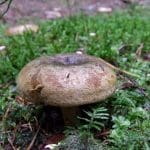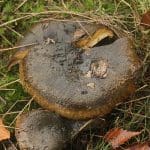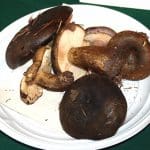Ugly Milkcap/ Summer / Autumn / Not edible
Through this guide we’re going to look at the key features to help identify the Ugly Milkcap mushroom
Scientific Name
Lactarius turpis
Family
Russulaceae
Habitat
Usually with Birch in damp places.
Description
Called Ugly Milkcap because of its dirty appearance, it has a cap 5-20cm across which is convex, then centrally depressed, margin inrolled/involute and hairy. The cap is dark olive-brown, umber or olive-blackish, margin paler; firm and thick fleshed, sticky and slimy, shallowly felted at first, somewhat woolly at margin. The stem or stipe (40-80 x 10-25mm) is short and stout, cylindrical or narrowing towards the base; concolourous with cap or paler; hollow, surface often shallowly pitted, slimy. The gills are adnate to slightly decurrent, fairly narrow and crowded; cream to yellowish buff, pale sepia where wounded. The latex produced from cut or torn gills is white and abundant; taste very hot and acrid.
Identifying Features for Ugly Milkcap:
Cap:
At first the cap has an involute margin (the margins curve downwards and roll inwards) and a somewhat depressed centre. The upper surface is olive-brown or yellow-green with tiny black scales and is often sticky or slimy in the middle giving the appearance of being covered in black-green slime, to which debris adheres. When young it has velvety zones and may be shaggy at the rim. Later it becomes funnel-shaped and the colour darkens to blackish.
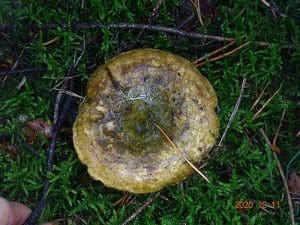
Stem:
Cylindrical or tapering downward, a paler, dirty-green than the cap; smooth but sometimes with shallow pits (scrobiculae), becoming hollow.

Gills:
Adnate to slightly decurrent.
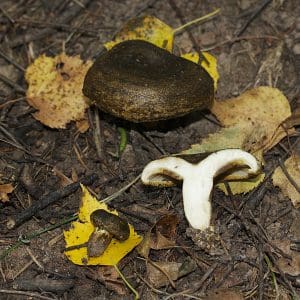
White then darker, staining olive brown by old milk which is initially white on contact with the air.

Smell:
Faint/slightly spicy
Spores:
Cream
Uses
Edibility of The Ugly Milkcap
The Ugly Milkcap contains a potent carcinogen, only some of which can be effectively removed by boiling. They are commercially collected and eaten in Russia and eastern European countries after special preparation.
Harvesting
Late summer to late autumn.
Known hazards
Contains carcinogenic necatorin.
Potential lookalikes
None. This is one of the easiest Milkcaps to identify to species. It looks rotten even when young and fresh.



